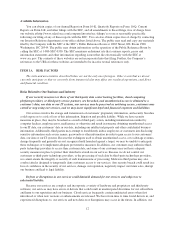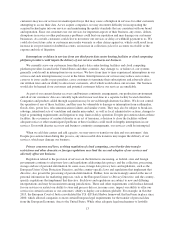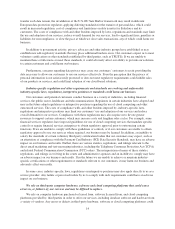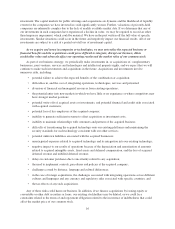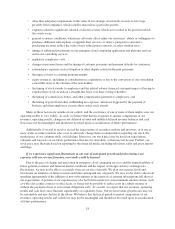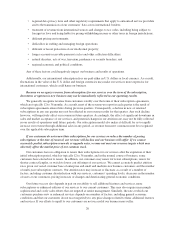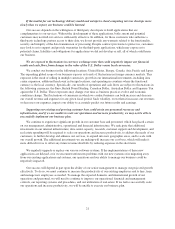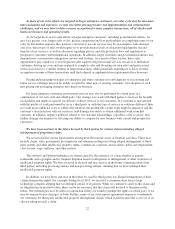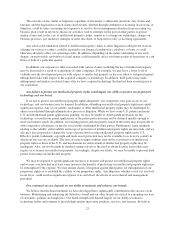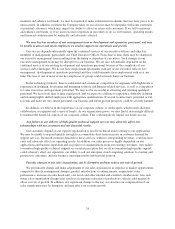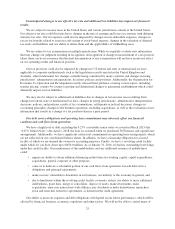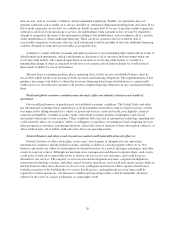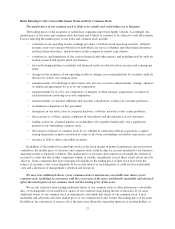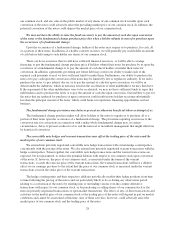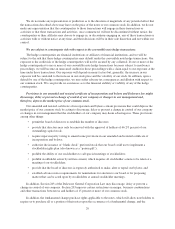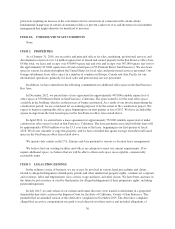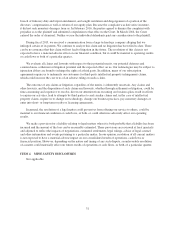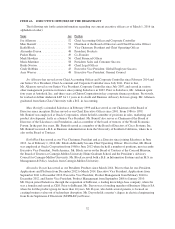Salesforce.com 2016 Annual Report Download - page 29
Download and view the complete annual report
Please find page 29 of the 2016 Salesforce.com annual report below. You can navigate through the pages in the report by either clicking on the pages listed below, or by using the keyword search tool below to find specific information within the annual report.As more of our sales efforts are targeted at larger enterprise customers, our sales cycle may become more
time-consuming and expensive, we may encounter pricing pressure and implementation and customization
challenges, and we may have to delay revenue recognition for some complex transactions, all of which could
harm our business and operating results.
As we target more of our sales efforts at larger enterprise customers, including governmental entities, we
may face greater costs, longer sales cycles, greater competition and less predictability in completing some of our
sales. In this market segment, the customer’s decision to use our services may be an enterprise-wide decision
and, if so, these types of sales would require us to provide greater levels of education regarding the use and
benefits of our services, as well as education regarding privacy and data protection laws and regulations to
prospective customers with international operations. In addition, larger customers and governmental entities may
demand more customization, integration services and features. As a result of these factors, these sales
opportunities may require us to devote greater sales support and professional services resources to individual
customers, driving up costs and time required to complete sales and diverting our own sales and professional
services resources to a smaller number of larger transactions, while potentially requiring us to delay revenue
recognition on some of these transactions until the technical or implementation requirements have been met.
Pricing and packaging strategies for enterprise and other customers for subscriptions to our existing and
future service offerings may not be widely accepted by other new or existing customers. Our adoption of such
new pricing and packaging strategies may harm our business.
For large enterprise customers, professional services may also be performed by a third party or a
combination of our own staff and a third party. Our strategy is to work with third parties to increase the breadth
of capability and depth of capacity for delivery of these services to our customers. If a customer is not satisfied
with the quality of work performed by us or a third party or with the type of services or solutions delivered, then
we could incur additional costs to address the situation, the profitability of that work might be impaired, and the
customer’s dissatisfaction with our services could damage our ability to obtain additional work from that
customer. In addition, negative publicity related to our customer relationships, regardless of its accuracy, may
further damage our business by affecting our ability to compete for new business with current and prospective
customers.
We have been and may in the future be sued by third parties for various claims including alleged
infringement of proprietary rights.
We are involved in various legal matters arising from the normal course of business activities. These may
include claims, suits, government investigations and other proceedings involving alleged infringement of third-
party patents and other intellectual property rights, commercial, corporate and securities, labor and employment,
class actions, wage and hour, and other matters.
The software and Internet industries are characterized by the existence of a large number of patents,
trademarks and copyrights and by frequent litigation based on allegations of infringement or other violations of
intellectual property rights. We have received in the past and may receive in the future communications from
third parties, including practicing entities and non-practicing entities, claiming that we have infringed their
intellectual property rights.
In addition, we have been, and may in the future be, sued by third parties for alleged infringement of their
claimed proprietary rights. For example, during fiscal 2015, we received a communication from a large
technology company alleging that we infringed certain of its patents. While we continue to analyze this claim and
no litigation has been filed to date, there can be no assurance that this claim will not lead to litigation in the
future. Our technologies may be subject to injunction if they are found to infringe the rights of a third party or we
may be required to pay damages, or both. Further, many of our subscription agreements require us to indemnify
our customers for third-party intellectual property infringement claims, which would increase the cost to us of an
adverse ruling on such a claim.
22


